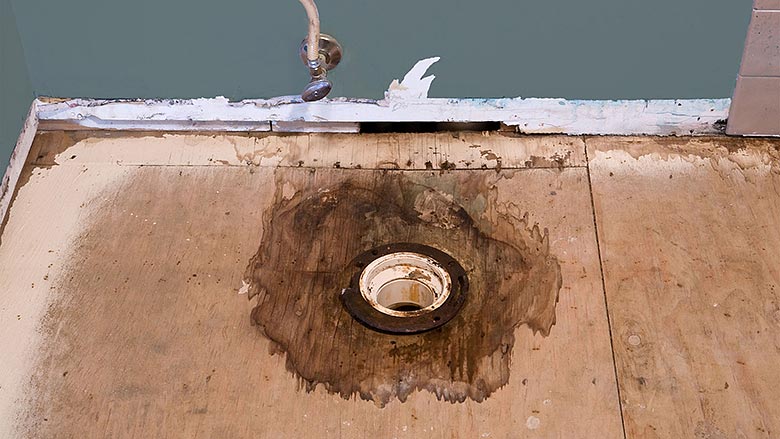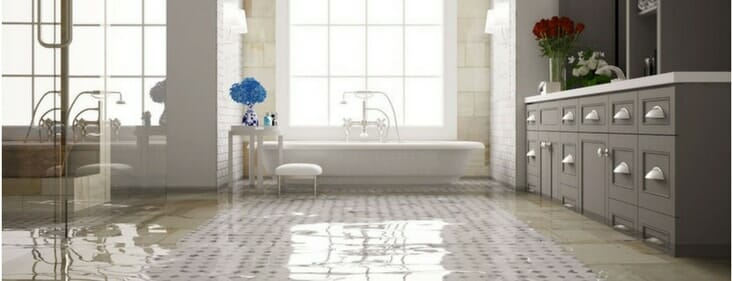Everyone has got his or her own perception when it comes to How to Fix a Water Damage Bathroom.

The bathroom is incredibly prone for wet buildup and prospective water damages as a result of the constant use water in it. This article provides straightforward examination techniques to assist discovering water damages threats.
The frequent use of water in the shower room makes it very at risk for wet accumulation and prospective water damages. By checking it regularly, you can reduce water associated problems.
The following set of evaluations is simple to carry out and ought to be done when in every 3 months in order to maintain your shower room healthy and also to stop possible water damages caused by the bathtub, the shower, pipe joints and plumbing, sinks, cabinets, and the toilet
Do not overlook carrying out these evaluations and also be complete while performing them. Keep in mind that these simple examinations can save you a lot of money by offering early indicators for water damage
Bathtub and Shower
The shower and bathtub require unique focus and also upkeep. Inspect the ceramic tiles as well as replace if cracked. Make sure that there is no missing out on cement in between the ceramic tiles. Examine and replace cracked caulking at joints where the wall surfaces fulfill the flooring or the tub. Clogged drains and also pipelines issues will prevent the bath tub from drying out as well as may indicate significant issues below the bathtub. Seek advice from a specialist immediately to stop structural damage. Take notice of stainings or soft areas around the bathtub wall surfaces as they might indicate an inner leakage.
Plumbing
Signs for water damages are hard to detect given that many pipelines are set up inside the walls.
Pay unique interest to floor covering as well as walls moisture and also spots as they may indicate an invisible plumbing issue. Inspect moisture degrees in adjacent rooms too.
Sinks and also Cabinets
Sinks as well as cabinets are revealed to wetness and moisture day-to-day and also are commonly overlooked. Evaluate on a regular basis under the sink as well as on the countertop over it. Repair any kind of drip in the catch as it may recommend drain problems. Check out the sink, sluggish draining pipes might indicate an obstructed drain. Change sink seals if they are split or loosened.
The Toilet
The commode is a susceptible water joint. Inspect the water lines and look for leaks around the commode seat, in the hose pipe, and also under the water storage tank. If you detect any type of signs of wetness on the floor around the bathroom, check for leakages in the toilet rim as well as tank seals.
Know that hanging toilet dish deodorants boosts the chances for blockages.
10 TIPS TO PREVENT WATER DAMAGE IN THE BATHROOM
The average household uses approximately 80-100 gallons of water per person per day. For a family of 4, that's almost 2,500 gallons of water a week! The largest portion of this consumption comes from bathroom use. Flushing the toilet uses the most water, followed by taking a shower or bath. With that much water running through the home, water damage in the bathroom is bound to happen. Knowing how to spot signs of a water leak is essential to preventing long-term damage. This guide provides you with tips to reduce the impact of water damage on your bathroom.
CAUSES OF BATHROOM WATER DAMAGE
Pipe breaks are the most common cause of water damage we see in our daily jobs. The age of a pipe plays a large role in a pipe break as well as corrosion. Over time, the metal begins to break down, allowing water to escape. Frozen pipe breaks are also a concern in the winter months. Toilet overflows caused by paper products or children flushing inappropriate items. Degraded caulking around the toilet or bathtub can allow water seepage, sometimes behind the fixture, into the subfloor or walls. Condensation forms when the water in a pipe is cooler than the air temperature. Beads of water form on the exterior of the pipes, sometimes so much so that the water begins to drip and pool below. Sink or shower backups created by poor drainage. HOW TO PREVENT WATER DAMAGE IN YOUR BATHROOM
Inspect your toilet supply line for worn or frayed hoses and replace them as needed. Winterize your plumbing to prevent a frozen pipe break. Use vent fans to prevent condensation that can lead to mold growth. Routinely check and replace degraded caulking around your toilet or bathtub. Increase the temperature in your toilet tank and insulate your pipes during the warm summer months to keep condensation from forming. Use child safety locks on the toilets. Flush only toilet paper. "Flushable" wet wipes are actually not good for your plumbing system. Additionally, feminine hygiene products should not be flushed. Prevent water from escaping the tub or shower. Make sure shower curtains are in good condition. Inspect shower doors and replace the seal strip if necessary. Wipe up any water that accumulates on the floor and use bath mats. Water left to sit can cause damage to the tiles and flooring. Refrain from using bath products containing heavy oils to avoid a clogged drain.

Hopefully you liked our excerpt about Common Causes of Water Damage in a Bathroom. Thank you for spending some time to browse our posting. In case you liked our blog entry plz don't forget to pass it around. Thank-you for taking the time to read it.
Book Services